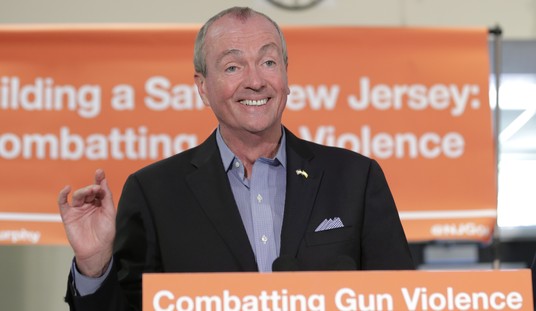It was only weeks ago that Republicans appeared likely to win control of the U.S. Senate in November. As pollsters began to shift over to likely voter models after Labor Day, their findings were not surprising; Republicans were much more enthusiastic about heading to the polls in November, and the generic congressional ballot began to show the public favored the GOP over Democrats by wide margins.
The state-level polling, however, is telling a different story. As more surveys of key battleground races are taken, election forecasters are revising their predictions. Probability models from a variety of respected analysts are now indicating that the race for control of the Senate is, at best, a tossup. Some are even leaning toward the notion that Democrats will retain control of the chamber.
At the beginning of September, The New York Times’ Upshot model envisioned that Republicans had a better than 60 percent chance of retaking the Senate. The GOP’s lead has since collapsed, and that modeler now gives the GOP only a 51 percent chance of reversing control of the upper chamber of Congress.
Much of this tightening is due to a spate of recent polling from North Carolina that suggests that the embattled incumbent Democratic Sen. Kay Hagan may hold on to her seat in a state Mitt Romney won in 2012.
As voters began to tune into that race, the Real Clear Politics average of polling shows, Hagan has defied conventional wisdom and has rocketed into the lead. Meanwhile, North Carolina House Speaker Thom Tillis has actually shed some support.
Nate Silver’s FiveThirtyEight, a forecaster which has been among the most bullish on the GOP’s prospects, has also hedged in recent days. The forecaster only gives the GOP a 54.7 percent chance of retaining the Senate – down 10 points from just two weeks ago.
“What’s perplexing is that this has happened right as Democrats’ position on the generic congressional ballot — probably the best indicator of the national mood — has deteriorated,” Silver wrote.
He suggests that, as the great philosopher Nelly said, it must be the money.
Money could be a more important factor. Consider the states with the largest polling movement: In North Carolina, Hagan had $8.7 million in cash on hand as of June 30 as compared with just $1.5 million for her Republican opponent, Thom Tillis. In Colorado, Udall had $5.7 million as compared with $3.4 million for Republican Cory Gardner.
These totals do not account for outside spending. But in stark contrast to 2010, liberal and Democratic “super PACs” have spent slightly more money so far than conservative and Republican ones, according to the Center for Responsive Politics. (One caveat for Democrats is that when money is spent on advertising, it can sometimes have short-lived effects.)
The Washington Post’s Election Lab and The Huffington Post both give Democrats the edge over Republicans to retain control of the upper chamber.
“Election Lab puts Democrats’ chances of retaining their majority at 51 percent — a huge change from even a few months ago when the model predicted that Republicans had a better than 80 percent chance of winning the six seats they need to take control,” The Post revealed when explaining their ratings change.
WaPo noted that the GOP’s struggles in Kansas, where incumbent Sen. Pat Roberts has become the Republican Party’s most vulnerable incumbent, and the GOP’s inability to gain traction in Iowa and Colorado in spite of having fielded strong recruits bodes ill for the party’s chances of retaking the Senate majority this fall.
The Huffington Post, meanwhile, now gives Democrats a 52 percent chance of hanging on to control of the upper chamber. This poll-based model, which eschews “fundamental” factors like the president’s job approval rating and the dynamics of the sixth year midterm, has also swung in Democrats’ direction as polls in North Carolina, Alaska, and Louisiana all indicate the Democratic candidate has not lost the support of their state’s voters.
“I’ve been telling audiences for weeks that I wouldn’t be especially surprised to see a Republican gain of five seats on election night, with December’s Louisiana runoff deciding the Senate’s fate,” Guy Benson wrote on Monday. “[U]ntil the data starts to reflect the expected rightward cascade of undecided voters, Republicans rely on that expectation at their peril.”
just for the sake of the hypothetical, another doomsday scenario:
Let’s say Republicans win those races most likely to flip: South Dakota, West Virginia, and Montana. The party holds on to Kentucky and Georgia, and the only competitive incumbent Democrats ousted are Sen. Mark Pryor in Arkansas and and Sen. Mark Begich in Alaska (states which overwhelmingly supported Romney in 2012, but where Democratic incumbents are running strong today).
With no candidate achieving a clear majority in Louisiana, that race heads to a runoff in December. Then let’s suppose that Kansas Sen. Pat Roberts loses to Democrat-turned-independent Greg Orman, who has pledged to caucus with the party that wins a clear majority.
First, this would be a lawyer’s paradise. Where they were legally allowed, challenges to close races would proliferate. Orman would probably come under intense pressure to decide with which party he will caucus well before December, and the paralysis which characterizes the Congress today will pale in comparison to the lame duck session. The 113th Congress may even come to be seen as a model of productivity compared with the 114th Congress.
This is just one of the many suboptimal conditions that may come to pass if neither party receives a clear mandate from voters in November.









Join the conversation as a VIP Member